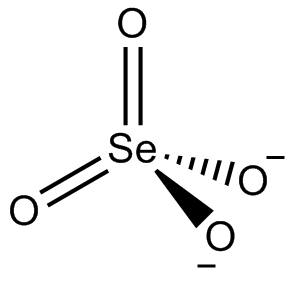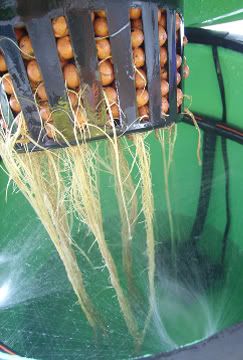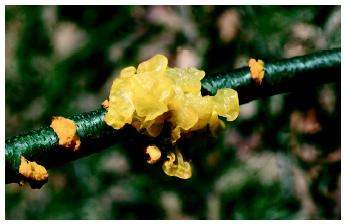There are several systems available today in which hydroponic crops can be grown. All hydroponic systems can be divided into two main categories defined either as static or dynamic systems. In hydroponic dynamic systems the solutions is recirculated at some point by using a water pump while static systems neglect the use of a pump or any other way in which water can be recirculated.
Static hydroponic systems can then be divided into two large categories, open and closed systems. In open systems, the nutrient solution that is given to the plants is never recovered and is "wasted" while in closed systems the solution is used for as long as it has the right chemical properties to feed the plants. For example, a lettuce raft system with no water recirculation is considered a static closed system (since the solution stays in contact with the plant until it is not right anymore) while a drip irrigation system with no pumps is considered an open system because new solution is given to the plants continuously. I will now discuss some of the pros and cons of hydroponic static systems, both open and closed.
Open Static Hydroponic System
The largest advantage of open static hydroponic systems is that the cost and infrastructure needed to pump solution back into the nutrient reservoir is neglected, this cost can be significant if solution volumes are small. Another important advantage is that the concentration of nutrients and pH of the nutrient solution does not need to be checked because fresh solution is continuously provided.
The main drawbacks of this systems have to do with the cost of the nutrient solution spent and the dumping of hydroponic nutrient solution in either soil, rivers, or the sewage system. Hydroponic nutrient solutions are very contaminating because of the easiness with which they cause algae blooms. The solution needs to be correctly processed in order to guarantee no contamination occurs, doing this will most often require water pumps, something which makes the first advantages of these systems void. The cost of the nutrient solution also becomes prohibitive. A regular plant consumes about half a gallon per hour in a drip irrigation system, wasting this amount of solution every hour in a commercial facility is unacceptable (reason why no commercial growers use open static hydroponic systems).
Closed Static Hydroponic System
This systems have the advantage of not being contaminating and using nutrient solutions as effectively as possible. They are the most economical systems that can be built and they provide ideal growing conditions for most plants with short life cycles. Larger plants like tomatoes do not benefit from having their roots wet all the time and require some sort of special design within the system.
The main disadvantages of these systems have to do with the necessity for water oxygenation (using air pumps) and the need for continuous monitoring of the nutrient solution in order to guarantee that ideal conditions are always met. This of course, is not very complicated and can be done with no problems. Most commercial growers will couple the ideal of a static system with a dynamic one in order to further improve it's effectiveness. For example, commercial lettuce raft growers often add water pumps in order to circulate, sterilize and oxygenate the water instead of using air pumps to do this.
As you can see, most static hydroponic systems are pretty primitive and are often confined to small home growers whose concern with efficiency and optimal conditions is not as strict as those of commercial growers. Almost all commercial growers use dynamic systems of some sort and that should also be the aim of home growers as these systems have shown to be more efficient and ecological albeit more expensive than static cultivation methods.(Below, a closed static hydroponic system for herb cultivation)
-
The main drawbacks of this systems have to do with the cost of the nutrient solution spent and the dumping of hydroponic nutrient solution in either soil, rivers, or the sewage system. Hydroponic nutrient solutions are very contaminating because of the easiness with which they cause algae blooms. The solution needs to be correctly processed in order to guarantee no contamination occurs, doing this will most often require water pumps, something which makes the first advantages of these systems void. The cost of the nutrient solution also becomes prohibitive. A regular plant consumes about half a gallon per hour in a drip irrigation system, wasting this amount of solution every hour in a commercial facility is unacceptable (reason why no commercial growers use open static hydroponic systems).
Closed Static Hydroponic System
This systems have the advantage of not being contaminating and using nutrient solutions as effectively as possible. They are the most economical systems that can be built and they provide ideal growing conditions for most plants with short life cycles. Larger plants like tomatoes do not benefit from having their roots wet all the time and require some sort of special design within the system.
The main disadvantages of these systems have to do with the necessity for water oxygenation (using air pumps) and the need for continuous monitoring of the nutrient solution in order to guarantee that ideal conditions are always met. This of course, is not very complicated and can be done with no problems. Most commercial growers will couple the ideal of a static system with a dynamic one in order to further improve it's effectiveness. For example, commercial lettuce raft growers often add water pumps in order to circulate, sterilize and oxygenate the water instead of using air pumps to do this.
As you can see, most static hydroponic systems are pretty primitive and are often confined to small home growers whose concern with efficiency and optimal conditions is not as strict as those of commercial growers. Almost all commercial growers use dynamic systems of some sort and that should also be the aim of home growers as these systems have shown to be more efficient and ecological albeit more expensive than static cultivation methods.(Below, a closed static hydroponic system for herb cultivation)
-

































